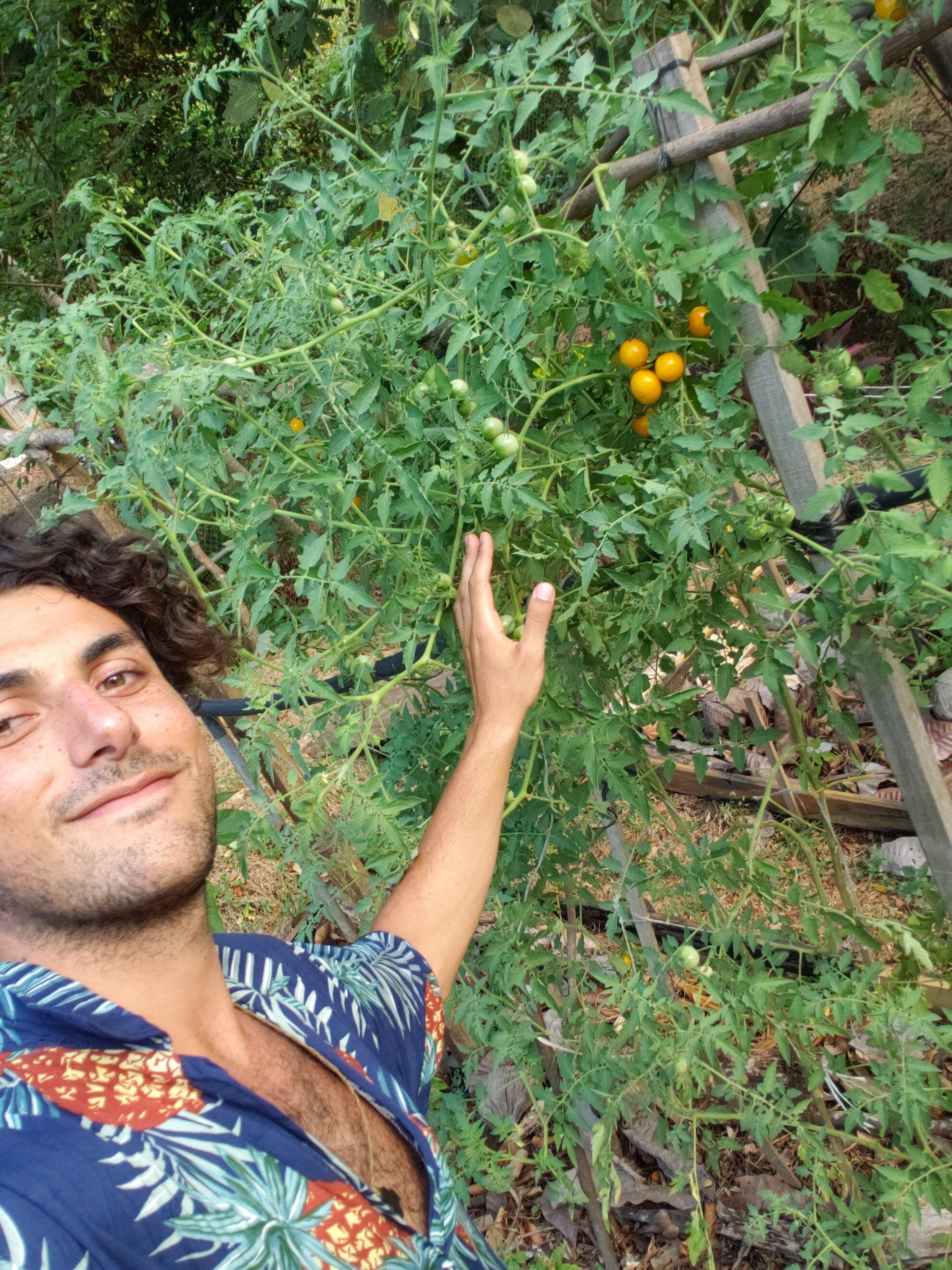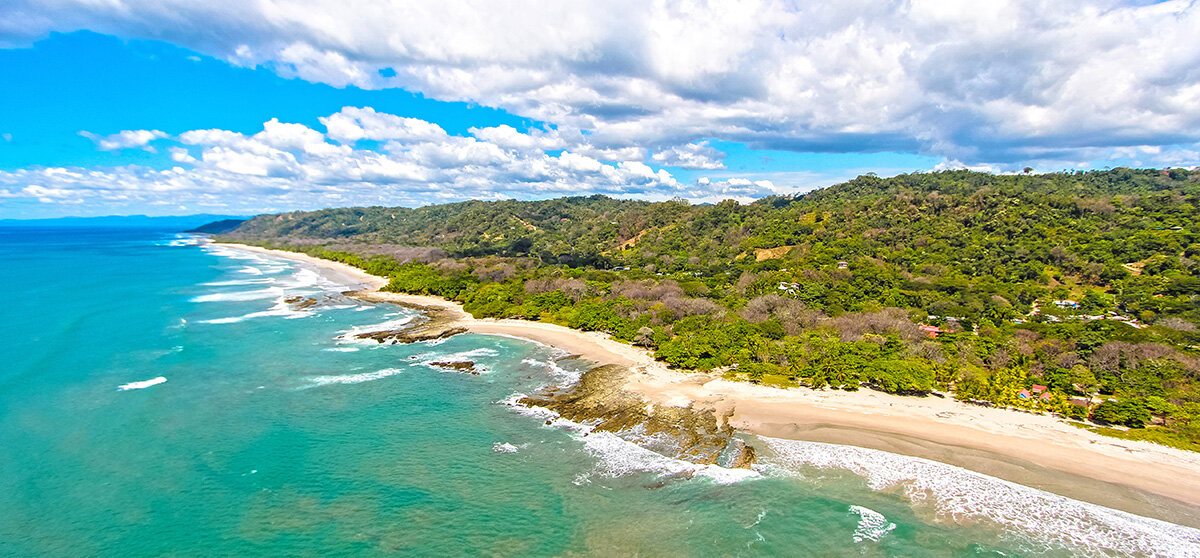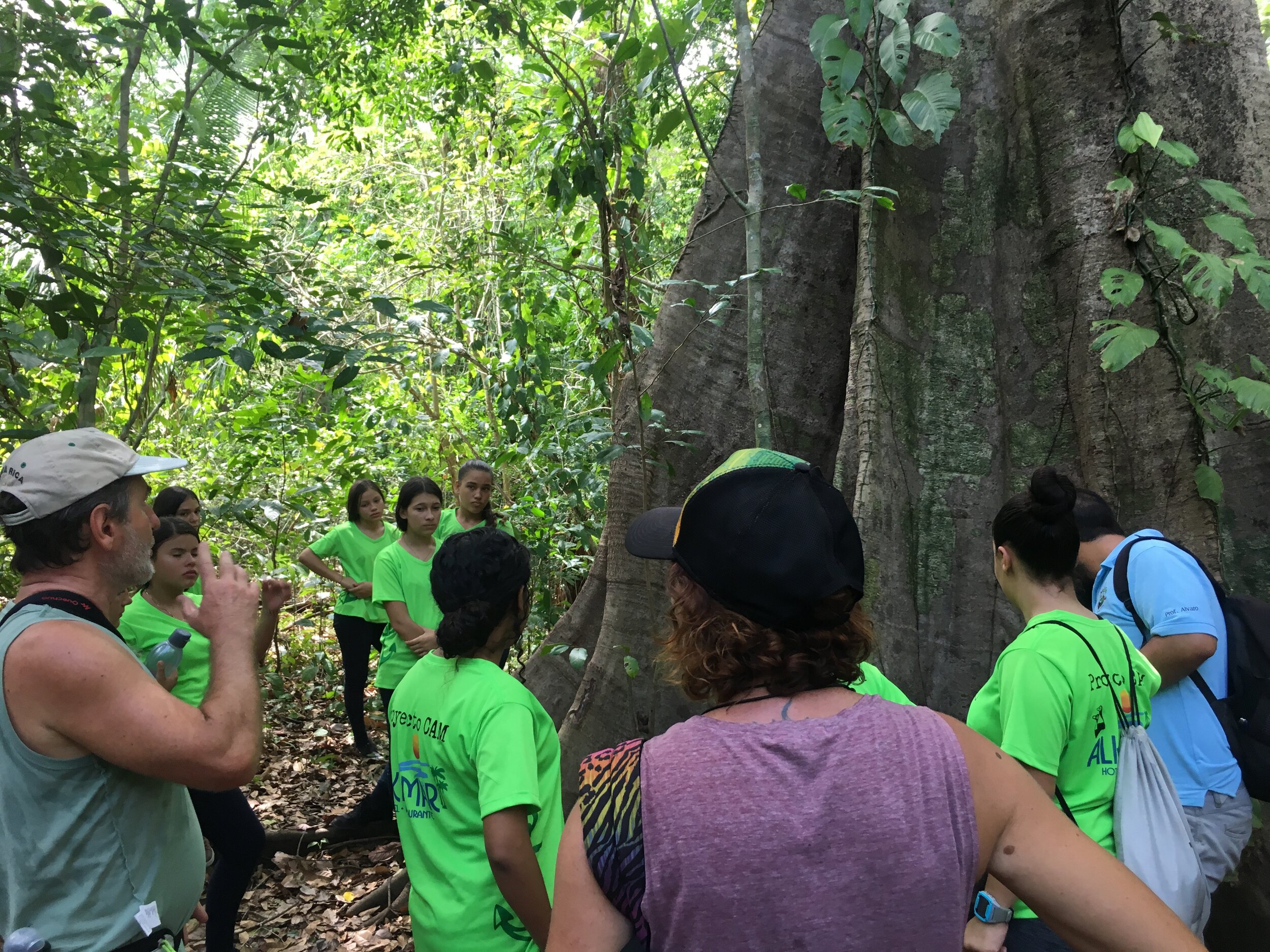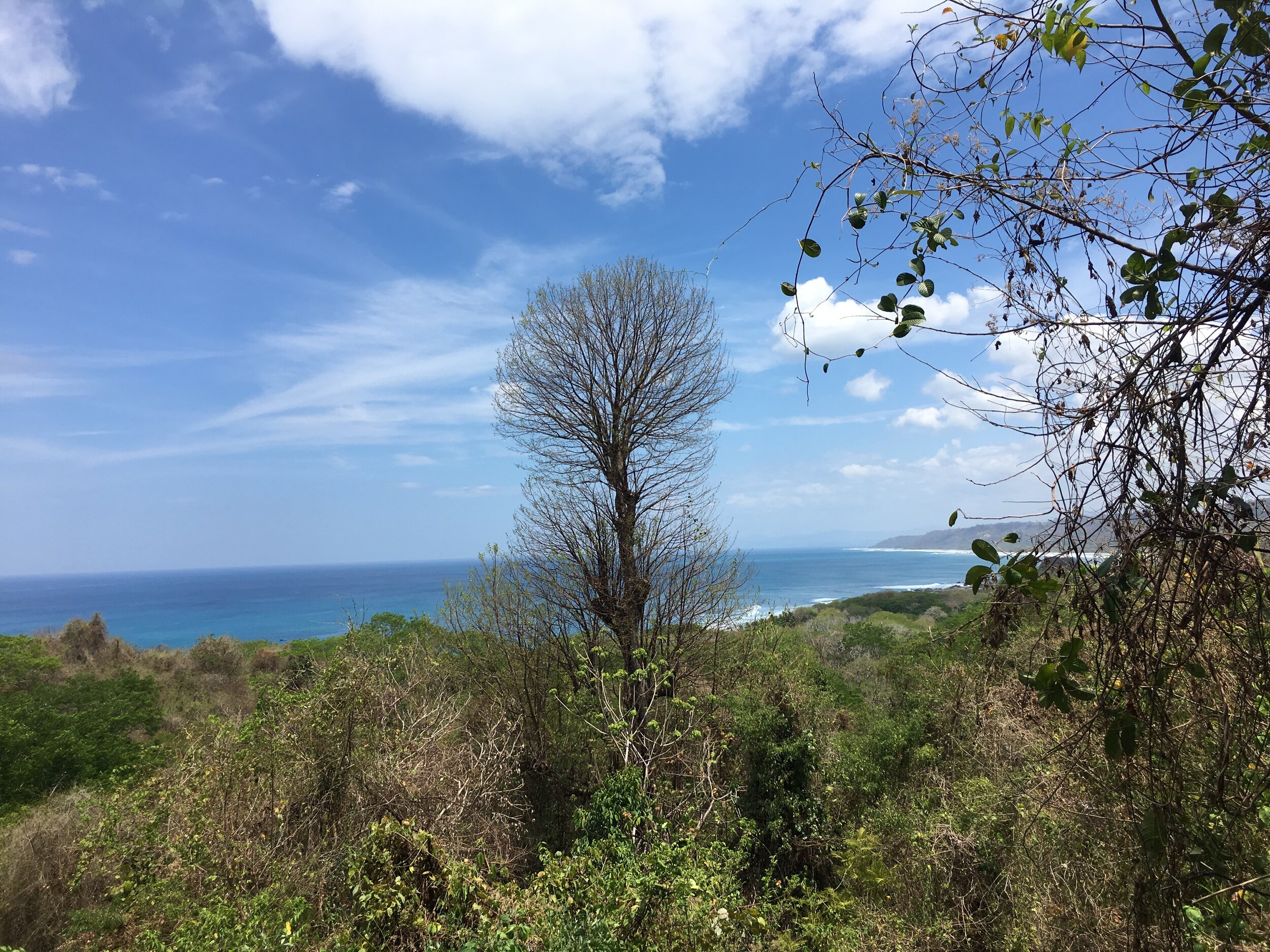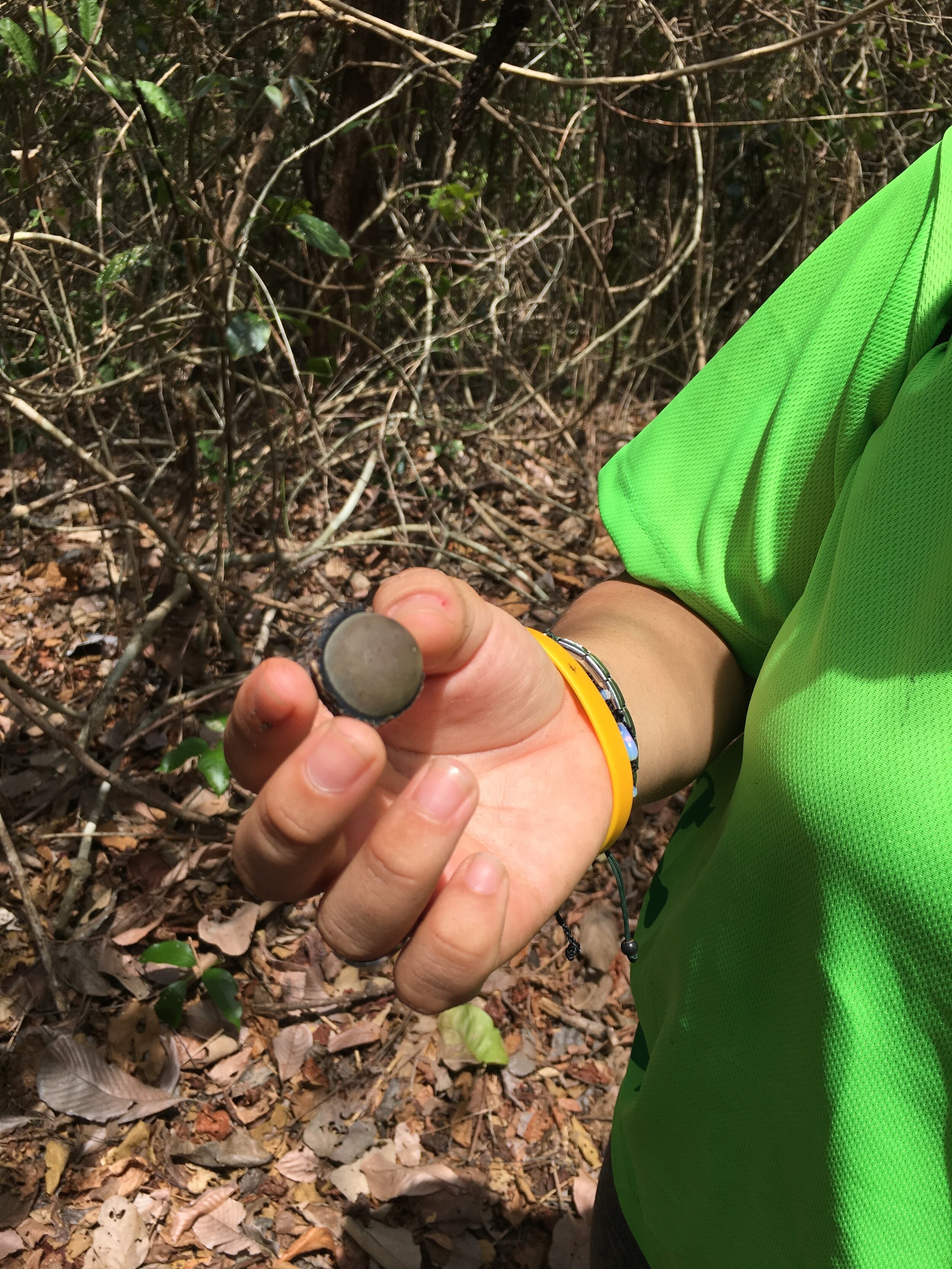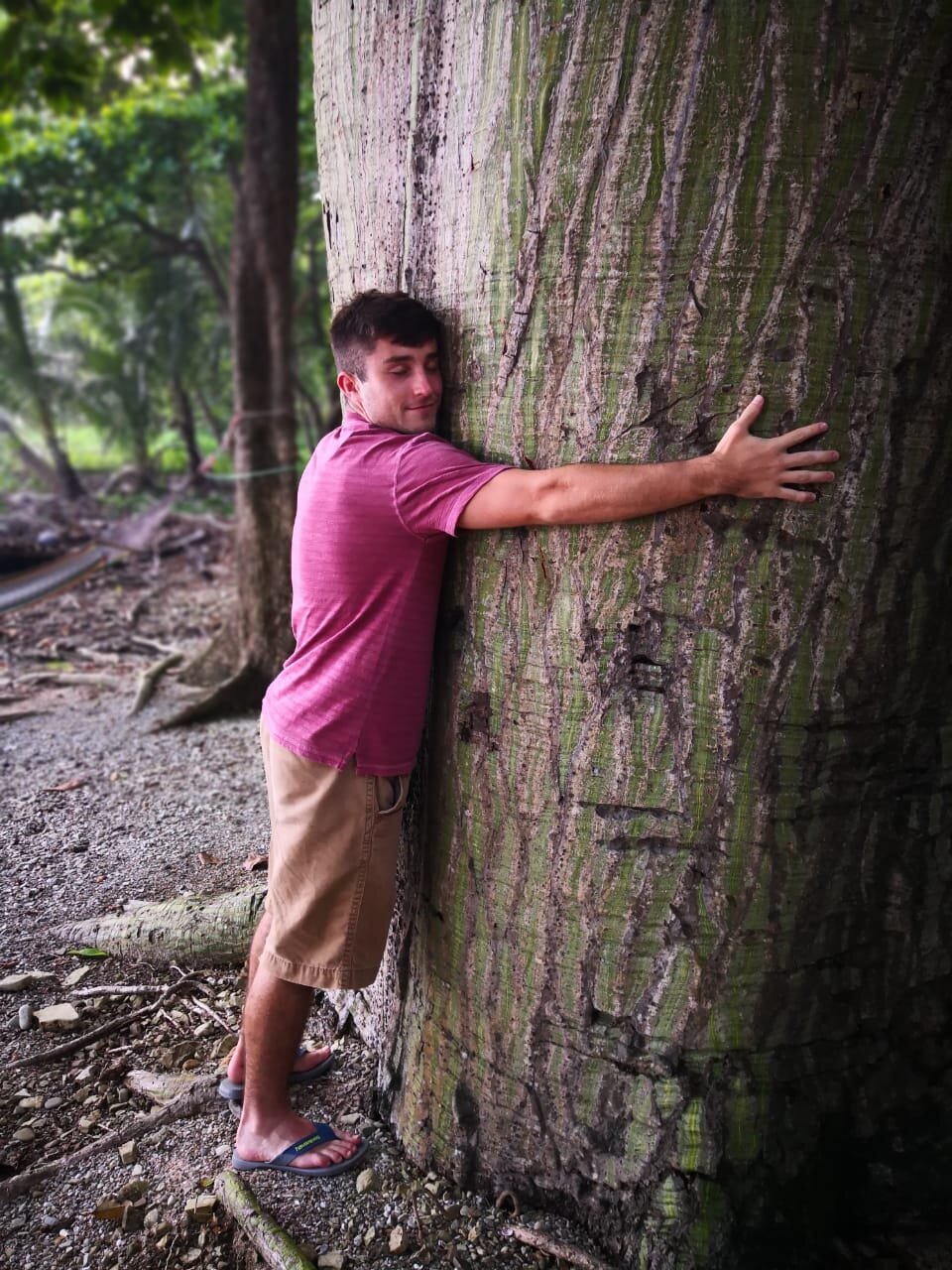Permaculture from Patagonia to the Costa Rica tropics
I must admit that I was surprised by my experience working at Casa Pampa since I study agronomy, I did not expect to learn how I managed to do it working with this organization. Being able to use all the resources and waste that one has and generates is not easy, however, it is possible and at Casa Pampa, they do it and work very well. I could also see the operation of Flor Blanca, a hotel that is also aware of its waste and does an excellent job, using the naturally filtered water from the showers and kitchens to water the gardens.
The work I did in Santa Teresa was very flexible allowing him to travel, surf and get to know, but the minute we worked we did it and we also learned how to do permaculture, for example.
Flor Blanca Green house
Sustainable agriculture is becoming more and more and what better than to learn from where they do it efficiently, is very useful for me in my professional future. On the other hand, I was able to meet and work with tropical species, which need other care for plants in Mediterranean places such as Chile.
The generation of soil that they make at Casa Pampa was one of the things that most impressed me since tropical soils are generally not very deep, but with the help of composting that we carried out plus proper care, you could see how the soil changed colored in the areas already treated and therefore had greater depth, being a more fertile soil.
I just have to thank this beautiful organization that taught me a lot and gave me great joy during my two weeks in Santa Teresa, I hope to return one day and see the progress they have made.
Felipe from Santiago de Chile
——————————————————————————————————————————
Debo admitir que me sorprendió mi experiencia trabajando en Casa Pampa, siendo que estudio agronomía, no me esperaba aprender cómo lo logré hacer trabajando con esta organización. Poder utilizar todos los recursos y residuos que uno tiene y genera no es fácil, sin embargo es posible y en Casa Pampa lo hacen y funcionan de lo más bien. Pude también ver el funcionamiento de Flor Blanca, un hotel que también son conscientes de sus residuos y lleva a cabo un excelente trabajo, utilizando las aguas filtradas naturalmente de las duchas y cocinas para regar los jardines.
El trabajo que realizaba yo en Santa Teresa era muy flexible permitiéndole recorrer, surfear y conocer, pero en el minuto de trabajar lo hacíamos y además aprendimos como por ejemplo a hacer permacultura.
La agricultura sustentable cada vez se está realizando más y qué mejor que aprender de donde lo realizan de forma eficiente, siendo muy útil para mi en mi futuro profesional. Por otro lado pude conocer y trabajar con especies tropicales, las cuales necesitan otros cuidados a las plantas de lugares mediterráneos como es en Chile.
La generación de suelo que hacen en Casa Pampa fue una de las cosas que más me impresionó ya que por lo general los suelos tropicales no son muy profundos, pero con la ayuda del compostaje que realizamos más el cuidado adecuado se podía ver cómo el suelo cambiaba de color en las zonas ya tratadas y por lo tanto tenía mayor profundidad, siendo un suelo más fértil.
Nada más me queda darle las gracias a esta bella organización que me enseñó muchísimo y me dio mucha alegría durante mis dos semanas en Santa Teresa, espero volver algún día y ver el progreso que han tenido
Felipe de Santiago de Chile
Permaculture, Sustainability and Pura Vida!
Costa Rica is known as a role model in nature conservation and for its rich biodiversity. For me a reason why I choose it as my destination for my 2,5 months travel. Through my professional background in environmental management and sustainability I’m interested in organizations which work in the field of sustainability, environmental conservation and creating awareness I wanted to help and exchange my knowledge and learn more about sustainability in Costa Rica.
During my stay in Santa Teresa I was happy to find Casa Pampa with its Permaculture Learning Lab for sustainability and environmental awareness. Casa Pampa is dedicated to spread environmental awareness, through volunteering programs, workshops and events around permaculture, composting and general environmental topics.
Within my time there, I learned a lot about gardening in the tropical area and the principles of permaculture and composting. Daily activities included all kind of work which arise in a garden as watering, planting, covering the beds and so on. Beside that there is always time to have wonderful conversations about all the important world topics.
I enjoyed my weeks in that beautiful community garden with the choir of tropical birds and the monkey family which is living there a lot. For me it was a great enrichment working with nature having all these conversations learning and exchanging about diverse topics with like-minded people.
I can everyone recommend being part and contribute in the Casa Pampa Volunteer Program. It doesn’t matter if you have already experience in sustainability, gardening or permaculture you will find your place there make your positive impact, learn and grow. ☺
Gracias para todos!!
Pura Vida!!
Vanessa Riepl, Austria
Biological Corridors help to reinforce biodiversity
A biological corridor is the set of habitats necessary for the accomplishment of the life cycles (reproduction, growth, refuge, eat, drink, hunt, etc.) of a species that are functionally linked together. Road, house, deforestation, fire, can destroy those corridors putting species at high risk in certain areas.
It is important that we realize that just cutting a tree could break a corridor and seriously bother animals like monkeys that always use the same path to get to the place they need to go to survive. When a biological corridor is broken, animals are forced to crossroads, put themselves in danger or get in the city which can lead to their death. It is a real threat to wildlife and all the balance of the ecosystem.
Costa Rica and the SINAC rely a lot on preserving those areas to maintain biodiversity, which is one of the main reasons tourists like to travel to Costa Rica. The general objective is to create those corridors to link protected areas together to help reinforce biodiversity.
Some countries started to build man-made biological corridors to permit species to cross large highways or urban areas. While it takes some time for wildlife to use those structures, cameras have seen them using it and it is a huge step in the right direction to protect biodiversity.
Forest fires are also a real threat to biological corridors, and as we entered the dry season the SINAC indicated that with the implementation of the system of permanent alert, the fire will be monitored with satellites, towers, and field inspection. Furthermore, more than 950 firefighters are ready to intervene nationwide. The awareness of the population is also a very important aspect to prevent forest fires and the campaign “A summer without forest fires” has been put in place. Be aware that March and April are the more critical months, but caution must be observed through all the dry season.
Protection of those corridors is not only the government's responsibility, everyone should know about the importance of those and think of the consequences of cutting a tree, making a fire, building houses, resort, etc. It is our responsibility to get knowledge of those important corridors for biodiversity, tourism, business, the country, and the planet.
Ghyslain Durand, Canada
If you want to know more about Ghyslain thoughs, please check www.ghyslaindurand.com
Los corredores biológicos ayudan a conservar la biodiversidad
Un corredor biológico es el conjunto de hábitats necesarios para la realización de los ciclos de vida (reproducción, crecimiento, refugio, comer, beber, cazar, etc.) de una especie que está funcionalmente vinculados.
La carreteras, la casa, la desforestación, el fuego pueden destruir esos corredores y poner a las especies en alto riesgo en ciertas áreas. Es importante que nos demos cuenta de que solo cortar un árbol podría romper un corredor y molestar seriamente a los animales como los monos que siempre usan el mismo camino para llegar al lugar que necesitan para sobrevivir.
Cuando se rompe un corredor biológico, los animales se ven obligados a cruzar, ponerse en peligro o entrar en la ciudad, lo que puede conducir a su muerte. Es una amenaza real para la vida silvestre y todo el equilibrio del ecosistema.
Costa Rica y el SINAC dependen mucho de la preservación de esas áreas para mantener la biodiversidad, que es una de las principales razones por las que a los turistas les gusta viajar a Costa Rica. El objetivo general es crear esos corredores para unir las áreas protegidas para ayudar a reforzar la biodiversidad.
Algunos países comenzaron a construir corredores biológicos artificiales para permitir que las especies crucen grandes carreteras o áreas urbanas. Si bien la vida silvestre necesita algo de tiempo para usar esas estructuras, las cámaras las han visto usarlas y es un gran paso en la dirección correcta para proteger la biodiversidad.
Los incendios forestales también son una amenaza real para los corredores biológicos, y cuando entramos en la estación seca, el SINAC indicó que con la implementación del sistema de alerta permanente, el incendio será monitoreado con satélites, torres e inspección de campo. Además, más de 950 bomberos están listos para intervenir en todo el país.
La conciencia de la población también es un aspecto muy importante para prevenir incendios forestales y se ha puesto en marcha la campaña "Un verano sin incendios forestales". Tenga en cuenta que marzo y abril son los meses más críticos, pero se debe tener precaución durante toda la estación seca.
La protección de esos corredores no es solo responsabilidad del gobierno, todos deben saber sobre la importancia de esos y pensar en las consecuencias de cortar un árbol, hacer un incendio, construir casas, resorts, etc.
Es nuestra responsabilidad conocer esos importantes corredores para la biodiversidad, el turismo, los negocios, el país y el planeta.
Ghyslain Durand, Canadá
Si desea saber más acerca de los pensamientos de Ghyslain, visite www.ghyslaindurand.com
Permaculture Forum and Organic Horticulture for self sufficiency in Santa Teresa, Costa Rica
Actividades Compost Club Agosto 2017.
Charla abierta de Permacultura y Huerta Orgánica para autoabastecimiento
Fecha: Jueves 17 Agosto l 3 PM l Lugar: Huerta Liceo Santa Teresa
Capacitación Teórico-Practica
"Adopción del compostaje enfocado en el sector gastronómico y hotelero". Un espacio para compartir experiencias y consejos
Fecha: Jueves 24 de Agosto l Hora:2 PM l
Lugar: Hotel Flor Blanca l Cupo máximo: 15 personas*
*Solicitamos a los interesados inscribirse con anticipación.
Damos un especial agradecimiento al Hotel Flor Blanca por todo el apoyo en el desarrollo de las actividades del COMPOST CLUB.
Queda abierta la invitación para los interesados que desean contribuir en la organización de los futuros eventos.
Las actividades son libres y gratuitas.
Los esperamos!
Activities Compost Club August 2017.
Open Permaculture Forum and Organic Horticulture for self-sufficiency
Date: August 24th | Time: 3 PM | Place:Horticulture site Liceo Santa Teresa
Theory & Practical Class
Adoption of Composting for Restaurants and Hotel Business
Date: Thursday, August 24th | Time: 2 PM| Place: Hotel Flor Blanca | Maximum Capacity: 15 people *
* If you are willing to attend, please register in advance.
We give special thanks to Hotel Flor Blanca for all the support in the development of the activities of the COMPOST CLUB.
The invitation remains open for those interested who wish to contribute to the Organization of future events.
The activities are open to the public and free.
See you there!!

